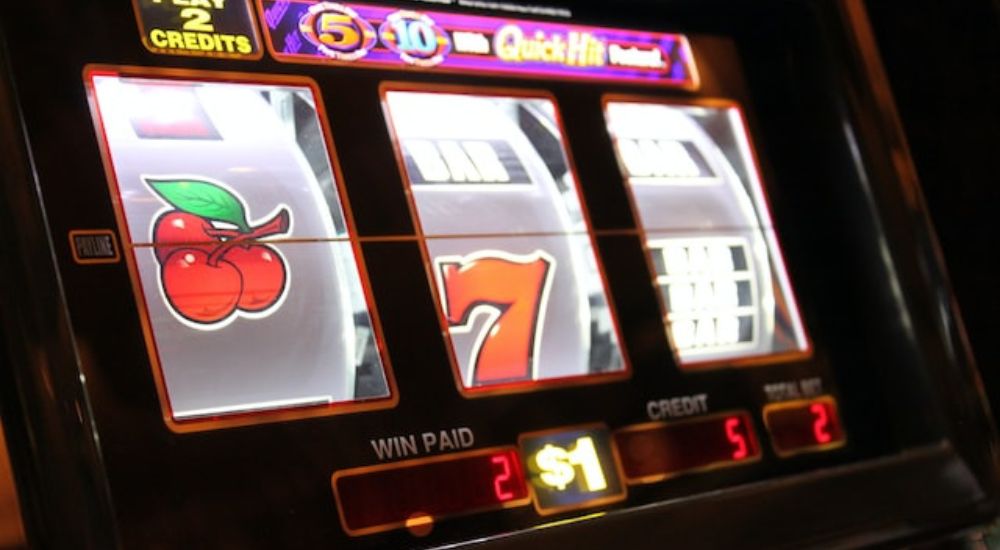The gaming industry is one of the most valuable in the entertainment sector right now – WePC estimates it could be worth $268 billion by 2025, with the bulk of the revenue coming from Asian gamers.
In this world, the competition is fierce, as developers release hundreds of games every week on the major storefronts – App Store, Steam, Itch.io, and many more – which makes being noticed a top priority.
However, that’s only half the battle: even if you can attract players to your game, you have to make sure they will keep playing your game over and over again – and maybe even dump some bucks into your game. This is where addictive game mechanics enter the fray.
In this article, we will explore what they are all about, their core principles, some of the most widely used addictive game mechanics, and we’ll finish by listing some games that implement them all over the place.
What are addictive game mechanics all about?
In game design, addictive game mechanics are a set of elements and techniques employed by game designers to keep players engaged and hooked. By tapping into the psychological and emotional needs of players, they can make the game experience more rewarding and satisfying, which in turn increases player retention.
While this can come in many forms, these mechanics are designed to create a sense of engagement, satisfaction, and accomplishment – and they can get really good at it. However, it’s important to remember that overusing or even misusing these mechanics can lead to negative effects, such as gambling addiction, lack of balance in players’ lives, and encouraging them to spend more than they can afford.

Core principles of addictive game mechanics
Now that we know what they are all about, let’s take a look at the core principles behind addictive game mechanics:
- They have great flexibility and scalability: game mechanics that can be greatly modified and expanded on are great for creating games that keep players engaged. As an example, think of some level templates that game designers could use over and over to generate increasingly harder levels with little effort;
- They and easy to understand: if players can quickly understand how some mechanics work – even if they will have to interact with it to iron out all their kinks – then they will likely be in for a good time;
- They are deep and allow for in-depth customization: game mechanics that have extensive customization options add a lot of replayability to games, which many titles explore to the fullest. Depending on the choices players have made throughout the game, their outcomes might be wildly different, creating more strategic opportunities for them;
- They grab the players’ attention and don’t feel like a chore: if a certain game mechanic is deemed interesting from the get-go, players will be much more likely to keep playing your game as they explore its limits. Game designers must take care to make the mechanic not feel like a chore, which can happen if it lacks quality of life (QoL) features, or it’s too frequent/cumbersome;
- They have a random element: game designers often bake some form of randomization into a game’s mechanics because it creates a sense of unpredictability, generating excitement for the players and adding replay value to the game. It can come in the form of randomized rewards, events, or outcomes.
Keep in mind, however, that not all great game mechanics make use of all core principles. It’s usual for them to implement 3 or even 4 of those principles, but you likely won’t find anything that checks all the boxes for the majority of players.

What are some of the most addictive game mechanics?
Robust progression system
It’s very common for games to have not one, but multiple progression systems at the same time, which can include leveling up, getting better equipment, acquiring and perfecting new skills, improving their gathering/crafting skills, and so on. They are great at retaining players – as they create some objectives for players looking to grind while also granting them a sense of accomplishment, which gets stronger the further they progress into the game.
Progress bars
Progress bars are extremely simple to design and implement, but their effect is unparalleled. By providing players with a visual representation of how close they are to reaching certain goals or completing a task, they help guide the player through the game while also keeping them more engaged.
Social features
Social networks, in-game guilds, factions, co-op challenges, competitions, and even leaderboards help the players feel a sense of competition and community among them, strengthening their connection to the game by making it much more enjoyable. They may also scratch the itch for those players who want to be at the top, giving them something to always look forward to.

Collectibles and achievements
Other game mechanics that go hand-in-hand and can be highly addictive are collectibles – rare/special items that some people love to collect – and achievements – a mechanic that rewards players for completing certain tasks or performing very specific actions.
They can be used to track a player’s progress through the game, which could foster a sense of competition and/or community among peers. Some players are highly determined to complete 100% of what a game has to offer – so having all kinds of side quests and crazy achievements is a good way to keep them challenged and engaged with the game.
Occasional rewards
It is important to reward players every now and then to keep them engaged because they serve as highly effective motivators. In games, rewards can come in many forms, such as in-game currency, temporary bonuses, items that can be used to upgrade their characters and/or equipment, and even rare collectible ones if they’re lucky enough. Occasionally rewarding your players can go a long way in creating a sense of accomplishment, excitement, and anticipation, keeping them engaged for long periods of time.
Daily activities
Some games have implemented a mechanic that encourages players to log in and play the game every day, offering them special rewards and bonuses for playing. This creates a sense of routine and strongly encourages players to regularly come back to the game.
High replayability
While having high replayability is usually the result of everything else, it’s good to aim for it. This feature can come in the form of slot machines, a card game, or a reset/prestige mechanic. Some games even encourage players to go on multiple playthroughs, as players unlock stronger and more interesting upgrades by doing so, always giving players something to look forward to.
Gambling
Despite its many controversies, gambling is currently one of the top game mechanics. In games, they allow players to risk in-game or even real-world currency to win potentially big prizes, which creates a sense of excitement and unpredictability.
Some players find great delight in gambling, which can be a slippery slope for many – more often than not leading to clinical addiction and financial problems if done irresponsibly. Australia is currently facing a gambling addiction epidemic, and other countries, like the United States, are not too far behind with the recent rise of betting sites and NFT games.

Examples of games with addictive mechanics
Path of Exile
One of the most popular action RPGs (ARPGs) out there, Path of Exile can be one hell of an addictive game. It possesses one of the deepest character-building experiences on the market: with hundreds of skills and thousands of unique items to choose from, replayability is completely off the charts.
The gameplay is complex and can be extremely challenging for new players, as the many interconnected systems come into play in maps, Path of Exile’s endgame. Grinding Gear Games, the game studio behind the world-renowned ARPG, drops a huge patch every 3 months, expanding on the endgame, adding new ways for players to build their characters, and allowing them to become even stronger with every update, which keeps the game fresh for all players.

The community is extremely active and dedicated, helping social players scratch that itch. Furthermore, the game heavily relies on luck to craft the best gear and attain the rarest drops, which makes Path of Exile feel like spinning a slot with every monster kill or currency usage – never knowing what you’ll get is part of the fun.
Oh, and it gets extra points for being completely free to play and, even though its microtransactions are expensive, there is no pay-to-win.
Lost Ark
Likely the biggest MMOARPG launched in recent years, Lost Ark possesses a plethora of addictive game mechanics as well. From its deep and long progression systems to its extremely dynamic gameplay, Lost Ark has it all: collectibles that can take months to grind, a housing system (with its own progression), a multitude of bosses and raids to take on, life skills, a vast open-world with many islands to explore, player versus player (PvP) battles, guilds, and much more.

One of Lost Ark’s most defining features, however, is its dailies system: there are a wide variety of daily activities for players to take on, but only the first few completions will give a significant amount of rewards. If players wanted to do so, they could grind the infamous chaos dungeons (which sort of resemble Path of Exile maps in that it’s a meat grinder) or take on the bosses all day, but they would get almost no rewards from doing so after the first two completions.
With that said, Lost Ark still has a lot to offer, and can be a highly addictive game for those looking for a longer game to enjoy.
Cookie Clicker
Developed by Orteil and released on the internet in 2013, Cookie Clicker quickly went viral. The game’s goal is extremely simple – click the gigantic cookie to generate cookies, and start your cookie-making empire from there – but just watching numbers go up can seriously keep players engaged for a long time. It’s one of the core principles in incremental/idle games, which has been explored to the fullest on other titles, like NGU Idle and Clicker Heroes.
Speaking of which, did you know Elon Musk banned his kids from playing this game?

Cookie Clicker also contains achievements, randomized rewards (like the golden cookie, which can temporarily boost your income multiple times over), and high replayability: the players are encouraged to take perform a “prestige”, a reset mechanic that can bestow the player with game-changing upgrades. With each prestige, the player can reach further beyond, which in turn unlocks more upgrades, allowing them to go even further.
Understanding Game Addiction: The Pull of Addictive Mobile Games
Mobile games, especially addictive ones, have revolutionized the gaming experience by incorporating various gameplay mechanics and enticing features. Games like puzzle games and multiplayer titles often employ a single addictive mechanic or loop that keeps players coming back regularly. Features like loot boxes, which offer a chance of getting rare cosmetic items, increase the probability of winning, creating a feeling of satisfaction that encourages players to invest more time and resources.
The positive feedback loop within the game environment can make players addicted to the game, leading them to return to it regularly. Game companies understand game addiction well and strategically design games to keep players hooked. The interaction between players in multiplayer games adds another layer of addiction, as the social aspect fosters a sense of competition and camaraderie. To make your game addictive, game developers must first understand the psychology of video game addiction and invest in creating a unique and engaging gaming experience that keeps players addicted and coming back for more.
Need help creating your upcoming game?
As you have read in this article, addictive game mechanics are designed to maximize player retention and engagement, making sure they always come back to the game. These scalable mechanics are easy to understand, offer personalization options, grab the players’ attention right away, and sometimes even have a luck element built into them – all of which can make a game extremely engaging.
If you’re looking into developing a game that will engage and delight your players for long after its initial release, then look no further than Main Leaf! We are a game development studio with over a decade of professional experience.
Our expertise in game-making is unmatched, and we have over 70 passionate full-time professionals who will work on your project from pre-production to release on the major gaming storefronts. We know all the ins and outs of how to make addictive games, and we’d love to create one just for you.
Interested? Contact us by requesting a game quote right now and we will get back to you in 24 hours.

